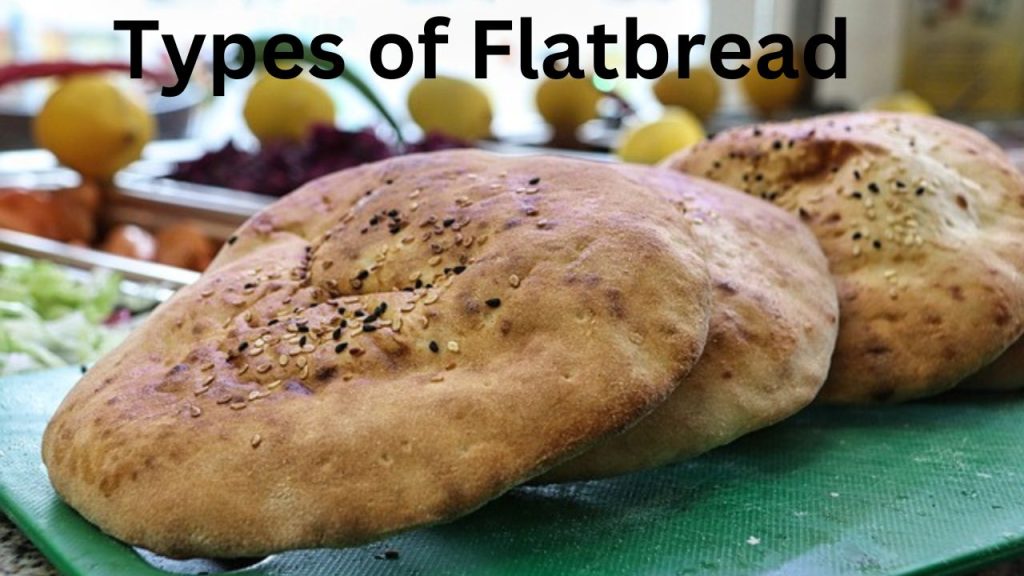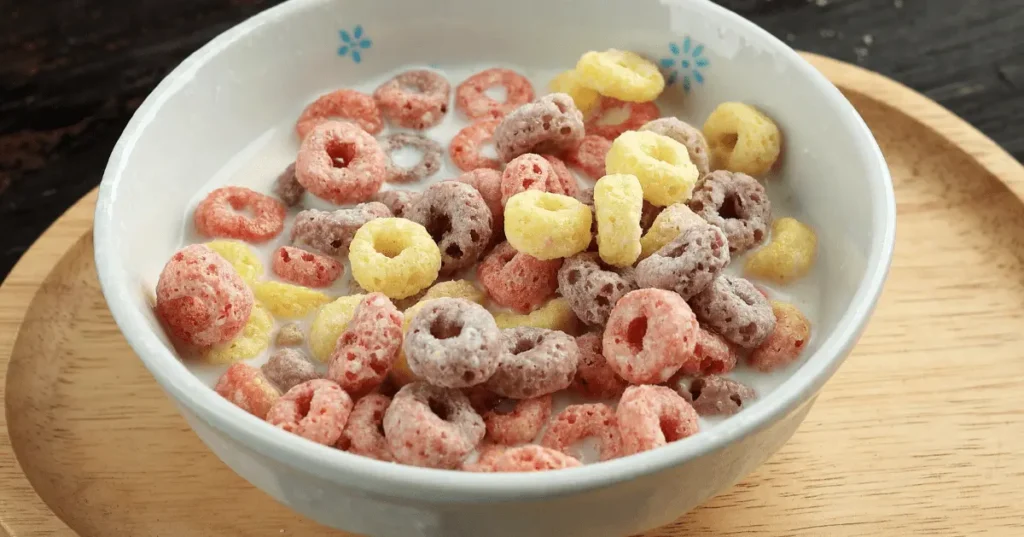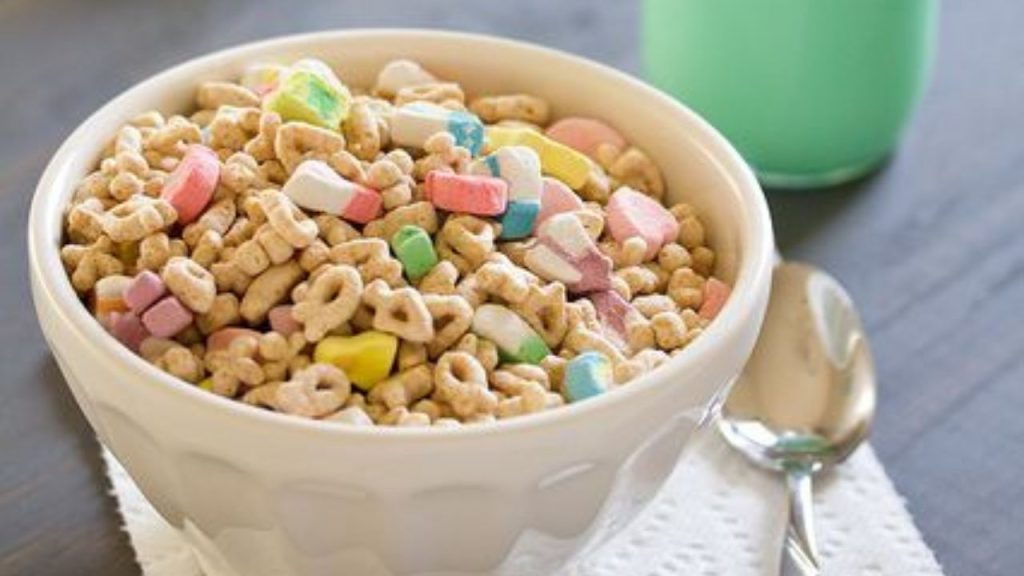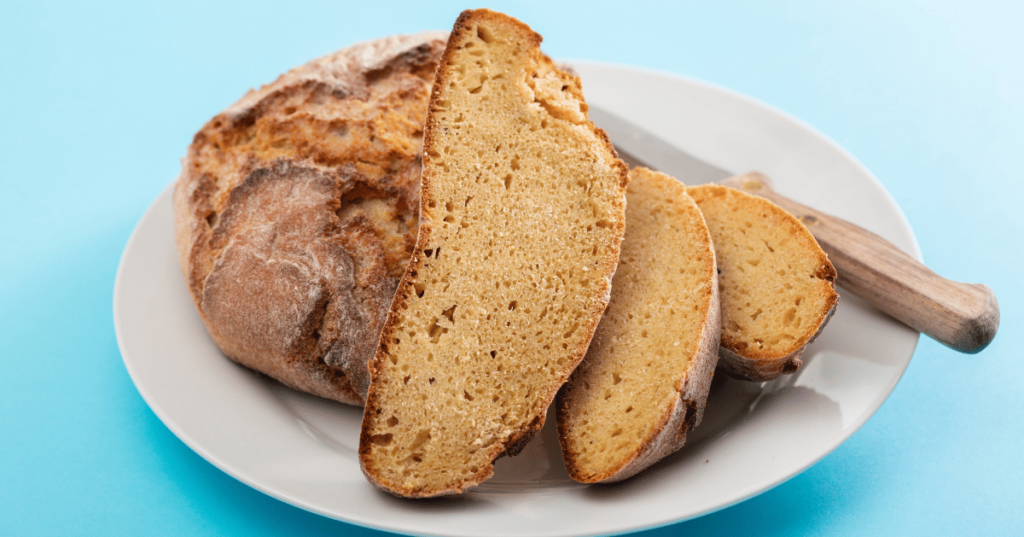Explore the different types of flatbread from around the world, including tortillas, naan, and pita. Learn their origins, unique uses, and how to enjoy these versatile flatbreads.
Types of Flatbread:
For centuries, people from all over the world have been eating flatbreads, one of the first varieties of bread. They are simple to produce and come in a range of flavors, textures, and shapes. Flatbreads can be eaten plain or packed, thin or thick, soft or crispy, and topped with a variety of ingredients. The different types of flatbread from throughout the world will be examined in this article, with a focus on their unique characteristics and origins.
Knowing the many kinds of flatbread can offer you a world of possibilities in your kitchen, regardless of whether you’re a food aficionado or trying to improve your culinary abilities. Let’s explore the various varieties of flatbread that have influenced cuisines around the world.
What Is Flatbread?
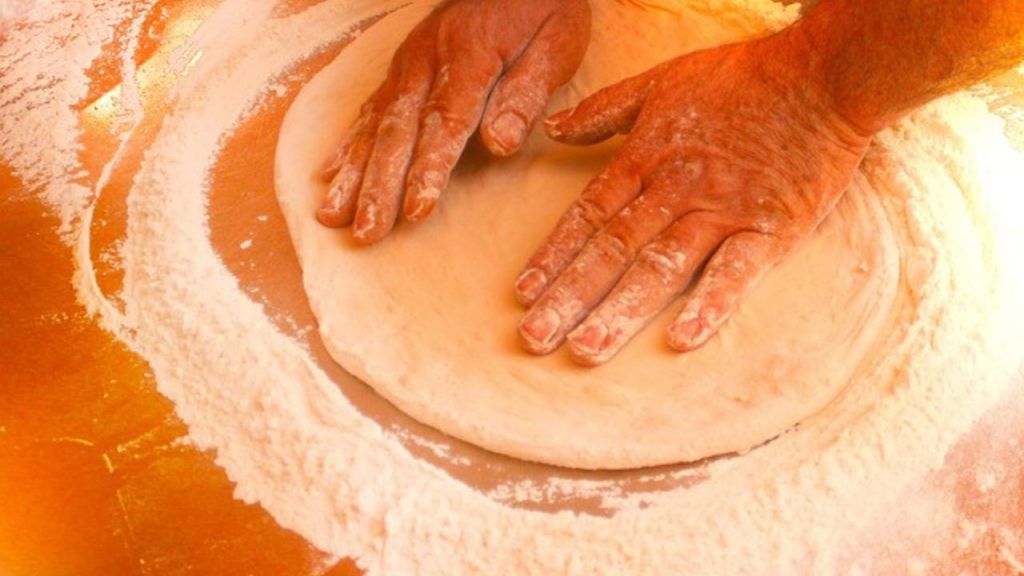
Flat bread they are a kind of bread that is prepared from flour, water and occasionally from salt. In most cases, it is applied in thin stratum which is then fried on a flat bottomed utensil e.g. skillet, oven or an open fire. Flatbreads differ from leavened bread because the flatbreads do not include, or rarely include yeast or other leavening agents, although some of the flatbreads may contain it.
Everybody uses flatbread as a staple food because it takes a short time to prepare, needs few ingredients, and one can add it to any recipe.
1. Tortilla
Origin: Mexico
Originating in Mexico, tortillas are among the most popular flatbreads. While maize (corn) has historically been used to make tortillas, wheat flour is now also used. While flour tortillas are frequently used in burritos and wraps, corn tortillas are an essential component of tacos, enchiladas, and tostadas.
Known for their soft, flexible feel, tortillas are baked on a heated skillet or griddle. They are a flexible flatbread choice that is frequently combined with beans, meats, cheese, and veggies.
2. Naan
Origin: South Asia
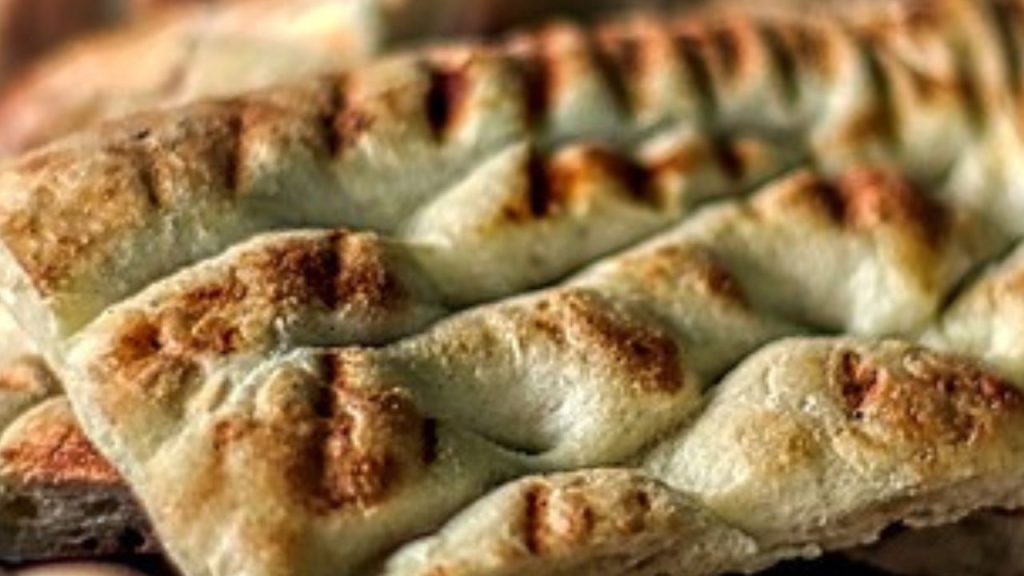
A popular leavened flatbread in South Asian cooking is naan. Naan, which is made with wheat flour, yogurt, and yeast, is cooked in a tandoor, a type of ancient clay oven, and is soft and slightly chewy.
For added taste, it is frequently garnished with sesame seeds, garlic, or herbs or drizzled with ghee (clarified butter). Naan is a mainstay of Indian and Pakistani cuisine, usually served with kebabs, stews, and curries.
3. Pita
Origin: Middle East
Arabic bread, sometimes referred to as pita bread, is a round flatbread with a pocket in the center. The pocket is perfect for filling with meats, veggies, and sauces since it forms when the dough puffs up during baking.
Pita is frequently served with shawarma, falafel, and hummus. It can also be sliced into wedges and used as a sandwich or pizza base or served with dips.
4. Roti
Origin: India
Made with whole wheat flour and water, roti is an unleavened flatbread. A tawa, which is a hot skillet or griddle, is used to cook it. Traditionally consumed with lentils, chutneys, and vegetable curries, roti is a mainstay in Indian homes.
Because roti is lighter and doesn’t include yogurt or yeast like naan does, it has a more neutral flavor that goes well with a lot of different foods.
5. Chapati
Origin: South Asia
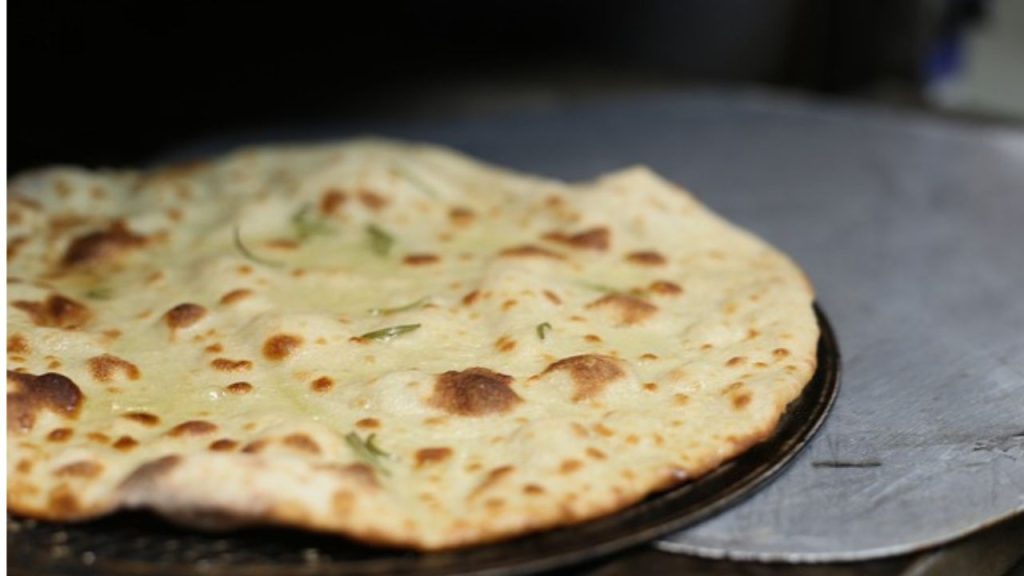
Another kind of Indian flatbread that is somewhat thinner than roti is called chapati. It is likewise produced with whole wheat flour and isn’t leavened. To get a puffed texture, the dough is rolled out into thin rings and fried on a tawa, occasionally finished over an open flame.
Almost every Indian dish, from gentle stews to fiery curries, is served with chapati, a flexible flatbread.
6. Lavash
Origin: Armenia
Armenia is the birthplace of lavash, a delicate, thin flatbread that is popular throughout the Middle East and Central Asia. Made with flour, water, and salt, it is typically baked in a clay oven that resembles a tandoor.
Kebabs, grilled meats, or vegetables are frequently wrapped in lavash. Additionally, it can be stored for extended periods of time and dried into a crisp form, making it a useful option for travelers.
7. Focaccia
Origin: Italy
Compared to other flatbreads, focaccia is a thicker, more bread-like Italian flatbread. It is prepared by baking it in an oven using flour, yeast, salt, and olive oil.
With its doughy texture, focaccia is ideal for dipping in olive oil or serving with soups and salads. It is frequently seasoned with cheese, garlic, and herbs.
8. Paratha
Origin: South Asia
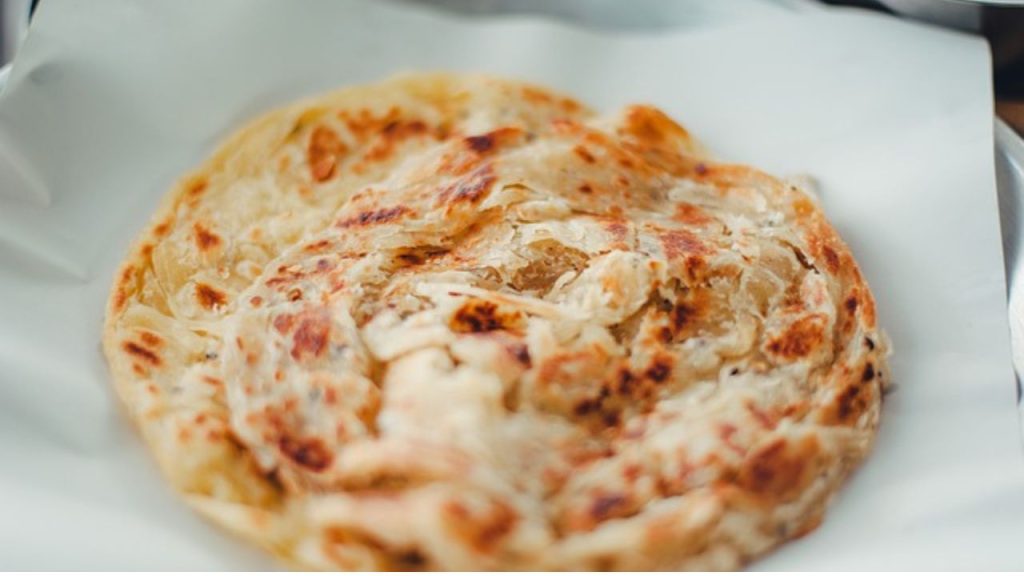
A South Asian flatbread with layers and flakiness is called a paratha. Paratha gets its characteristic flaky texture from the layers of dough created by folding it repeatedly.
You can either eat paratha simple or stuff it with other ingredients such minced beef, potatoes, spinach, or paneer. This filling dish is frequently served with curries, pickles, or yogurt.
9. Injera
Origin: Ethiopia
Teff flour, an indigenous grain from Ethiopia, is used to make injera, a spongy flatbread. The fermentation technique used to manufacture the batter gives it a slightly sour taste.
A common ingredient in Ethiopian and Eritrean cooking, injera can be used as a plate or utensil. The bread absorbs the tastes of the food as it is used to scoop up veggies, lentils, and stews.
10. Matzo
Origin: Jewish Cuisine
Traditionally consumed during the Jewish festival of Passover, matzo is an unleavened flatbread. To avoid fermentation, it is made with only wheat and water and baked rapidly.
Depending on how it’s made, matzo might be mushy or crunchy like a cracker. In Jewish traditions, it has great religious and cultural significance.
11. Frybread
Origin: Native American Cuisine
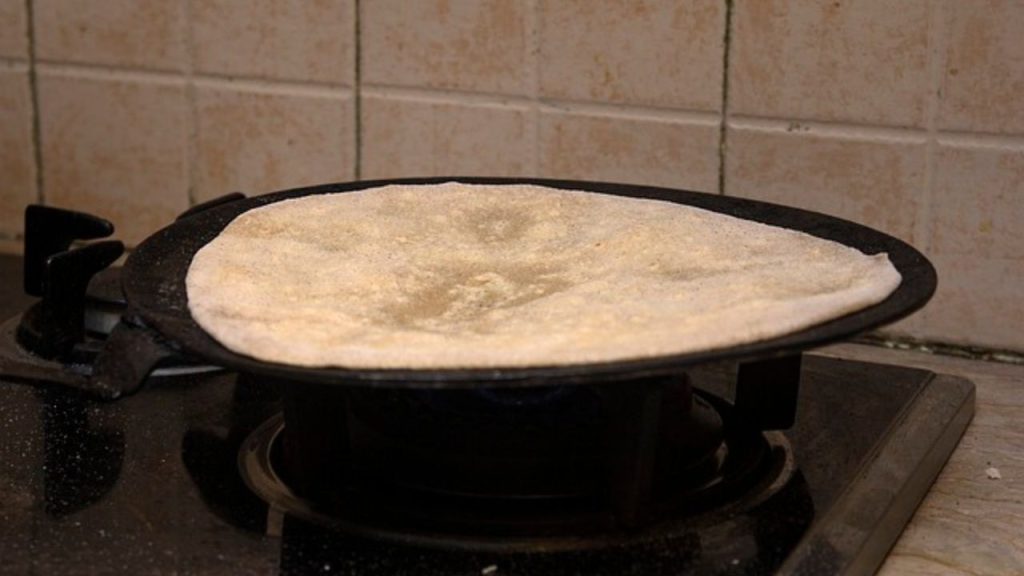
Instead of being baked or grilled, frybread is a flatbread that is deep-fried. In addition to flour, water, and salt, baking powder is occasionally added for a fluffier texture.
Although it can also be used as a foundation for savory foods like tacos, frybread is typically eaten with honey, jam, or powdered sugar.
12. Piadina
Origin: Italy
The ingredients for piadina, a thin Italian flatbread, are flour, water, and either lard or olive oil. It is frequently used as a wrap for contents like cheese, prosciutto, and veggies and is cooked on a griddle.
In Italy, piadina is a common street dish that is typically served warm with its ingredients folded around it.
13. Khobz
Origin: North Africa
Khobz is a traditional flatbread from North Africa, particularly Morocco. It is slightly leavened and has a dense, chewy texture. Khobz is typically baked in a clay oven and served with tagines, soups, or stews.
14. Scallion Pancakes
Origin: China
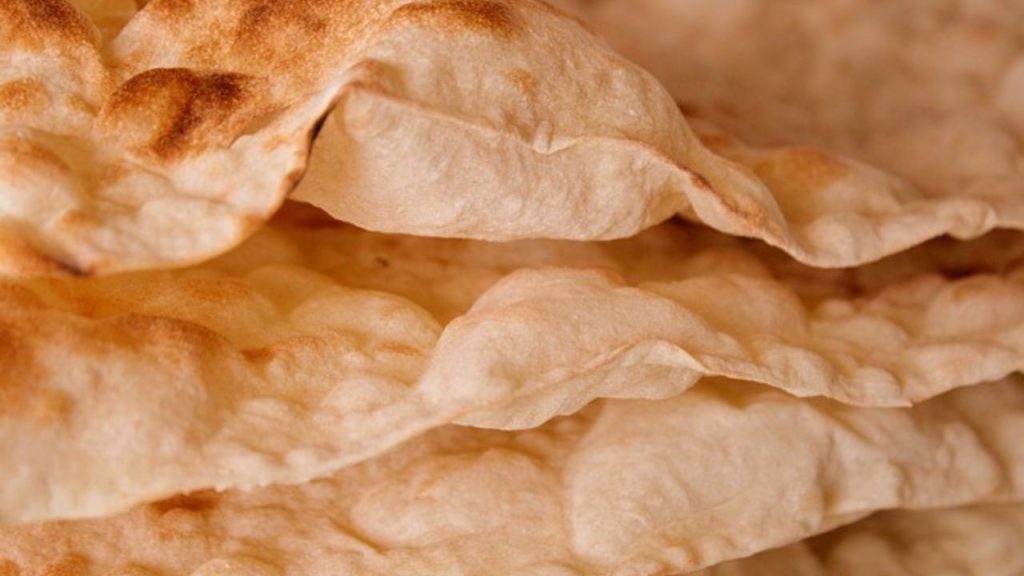
Cong you bing, also known as scallions pancakes, are a delicious Chinese flatbread prepared with flour, water, and finely chopped scallions. To achieve a flaky texture, the dough is layered and rolled, then it is then pan-fried until it is crispy.
Scallion pancakes are prominent in Chinese street food culture and are frequently served as a snack or side dish.
15. Arepa
Origin: Colombia and Venezuela
Arepas are cornmeal-based, circular, and thick flatbreads. They are frequently split open and stuffed with cheese, meats, or vegetables, and they can be baked, grilled, or fried.
In Venezuela and Colombia, arepas are a common breakfast, lunch, or dinner option. Read about how to make Cornbread without flour
FAQs
1. What is the easiest flatbread to make at home?
Roti or tortillas are among the easiest flatbreads to make, as they require minimal ingredients and no yeast.
2. Can flatbread be gluten-free?
Yes, many flatbreads like injera and arepas are naturally gluten-free because they use alternative flours like teff or cornmeal.
3. What is the difference between naan and pita?
Naan is softer and thicker, often made with yogurt and yeast, while pita is thinner and has a pocket.
4. Is flatbread healthy?
Depending on the ingredients, flatbread can be nutritious. Generally speaking, whole-grain or gluten-free alternatives are healthier.
Conclusion
There are innumerable types of flatbreads, each with its own ingredients, cooking techniques, and history. These breads are essential to their individual cuisines, from the spongy injera of Ethiopia to the soft tortillas of Mexico.
You may enjoy the culinary traditions of civilizations around the world and add diversity to your meals by trying out different kinds of flatbreads. Why not try creating a flatbread from a different region of the world the next time you’re in the kitchen?

